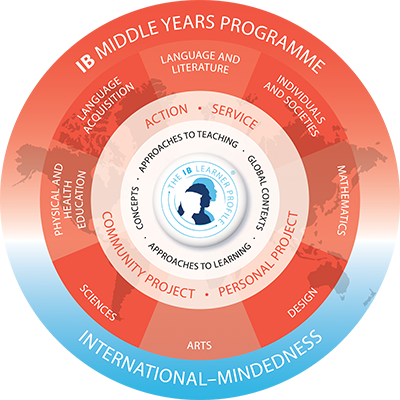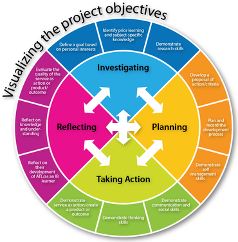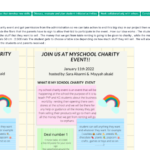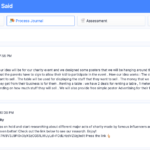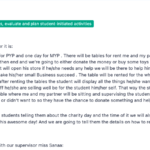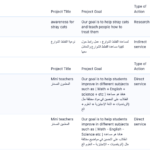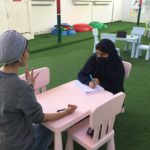The MYP is a framework that nourishes the younger learner, placing equal importance on all subjects, skills, and conceptual understandings.
The MYP is a programme that focuses on developing knowledge, skills, and conceptual understandings to help learners demonstrate what they can do with what they know.
For further information about the IB and Middle Years Programmes, visit www.ibo.org
Let’s explore more about the MYP at MySchool
1. What is the IB Middle Years Programme
The Middle Years Programme (MYP) is a curriculum framework designed for learners aged 11–16 by the International Baccalaureate (IB). It is a comprehensive curriculum which allows students to develop deep knowledge and skills they need to act effectively in the twenty-first century. The program provides the young learners a holistic learning that is related to the real world.
2. The Programme Model
The IB MYP model focuses on the student as a center, then focus on developing Approaches to Learning and Approaches to Teaching, Concepts and Global Contexts. Then the model master the knowledge through eight subjects by using varieties of concepts and advanced skills to enhance international mindedness understanding. This MYP model leads to the development of the IB learner profile.
3. What is the IB Learner Profile
The IB Learner profile is part of the four IB programmes: PYP, MYP, DP and CP. the aim of all IB programmes is to develop internationally minded young people who, recognizing their common humanity and shared guardianship of the planet, help to create a better and more peaceful world.
as IB learners we strive to be:
4. What are the Global Contexts?
The curriculum model of the MYP consists of six global contexts. Each context taught through one of these global contexts :-
| The Global Context | The Scope of learning |
| Identities and Relationships | Who am I? Who are we? |
| Orientation in Space and Time | What is the meaning of when and where? |
| Personal and Cultural Expression | What is the nature and purpose of creative expression? |
| Globalization and Sustainability | How is everything connected? |
| Fairness and Development | What are the consequences of our common humanity? |
| Scientific and Technical Innovation | How do we understand the world in which we live? |
5. What are the Approaches to Learning (ALT) in the MYP?
ALT skills are explicitly and purposefully taught in the IB classroom to help students to learn how to learn. There are five categories and ten clusters:
Communication
Social
Self Management
Affective
Reflections
Research
Media literacy
Thinking
Creative Thinking
Transfer
6. Concepts in the MYP
A concept-based model is used is the MYP because it encourages students to process factual knowledge at a deeper intellectual level, also students will relate new knowledge to prior knowledge. Addition to that students will achieve a higher level of critical, creative and conceptual thinking.
7. Key Concepts in MYP
8. Assessment in MYP
The MYP assessment process is called a criterion-related model. It is vital that both students and parents understand the methods of assessment and play an active role in the process.
- Each subject has 4 criteria ( A,B,C and D).
- Each criterion worth 8 points.
- Each level has a corresponding description from (0-8).
| Language & Literature | Language acquisition | ||
| Criterion A | Analysing | Criterion A | Comprehending spoken and or Visual Text |
| Criterion B | Organizing | Criterion B | Comprehending written and or Visual Text |
| Criterion C | Producing Text | Criterion C | Communicating in response to Spoken and/or written and/or visual text |
| Criterion D | Using Language | Criterion D | Using language in spoken and/or written format |
| individuals and Societies | Sciences | ||
| Criterion A | Knowing & understanding | Criterion A | Knowing & understanding |
| Criterion B | Investigating | Criterion B | Inquiring & Design |
| Criterion C | Communicating | Criterion C | Processing & Evaluating |
| Criterion D | Thinking Critically | Criterion D | Reflecting on the impacts of Science |
| Mathematics | Arts | ||
| Criterion A | Knowing & understanding | Criterion A | Knowing & understanding |
| Criterion B | Investigating Patterns | Criterion B | Developing Skills |
| Criterion C | Communicating | Criterion C | Thinking Creatively |
| Criterion D | Applying Mathematics in real life contexts | Criterion D | Responding |
| Design | Physical and Health Education | ||
| Criterion A | Inquiring & Analysing | Criterion A | Knowing & understading |
| Criterion B | Developing Ideas | Criterion B | Planning for Performance |
| Criterion C | Creating solution | Criterion C | Applying and Performing |
| Criterion D | Evaluating | Criterion D | Reflecting and Improving Performance |
9. Grading for Summative Assessment in MYP
In the MYP, each criterion has nine possible levels of achievement (0–8), divided into four bands that generally represent limited (1–2); adequate (3–4); substantial (5–6); and excellent (7–8) performance. Level 0 is available for work that is not described by the band descriptor for levels 1 and 2. Each band has its own unique descriptor that teachers use to make “best-fit” judgments about students’ progress and achievement.
10. Final Grade in MYP
To arrive at the final 1-7 grade after determining the final level of achievement for each criterion, add together the student’s final achievement levels in all criteria (A, B, C and D) of the subject group (All criteria must be assessed at least once per semester, at least twice per year). The total is converted to the final 1-7 grade using the table below. The table provides a mean of converting the criterion levels to a 1–7.
| Grade | Boundary Guideline |
| 1 | 1-5 |
| 2 | 6-9 |
| 3 | 10-14 |
| 4 | 15-18 |
| 5 | 19-23 |
| 6 | 24-27 |
| 7 | 28-32 |
| A | B | C | D | Total |
| 5 | 5 | 4 | 6 | 20 |
So the final grade is 5 out of 7.
Thank you,
Iris Eltinnay , MYP Coordinator
Work Cited:
MYP: From Principles into Practice, Cardiff, Walres: International Baccalaureate Organization, 2014
Programme Standards and Practices, Cardiff, Walres: International Baccalaureate Organization, 2014
11. Community Project
Community Projects
What is the MYP Community Project?
The MYP 3 ( Grade 8) Community Project is a significant activity for students to complete in MYP 3 (8th grade) of the MYP programme at MySchool. As of an authorized IB-MYP school, all MYP 3 ( Grade 8) students will be expected to conduct a community project.
The community project concentrates on community and service and allows students to prioritize needs in many communities and address those shortages through service-learning. Previously, service learning was a chance for learners to contribute to the community and demonstrate service as action. However, due to the widespread pandemic, learners will utilize their creativity and skills to deal with a need of the community while still maintaining their safety. As a consolidation of learning, the community project immerses learners in an in-depth inquiry leading to service as action in the community. The community project is mainly completed in groups of two or three students. The topic /issue for the project is given rise to in consultation with the project supervisor, who is responsible for supervising the development of the projects aligned with projects mentors based on the IBMYP updated community project guide.
Community Projects Aims:-
The aims of the MYP community project are to encourage and enable students to
- participate in a sustained, self-directed inquiry within a global context
- generate creative new insights, and develop deeper understandings through in-depth investigation
- demonstrate the skills, attitudes, and knowledge required to complete a project over an extended period of time
- communicate effectively in a variety of situations
- demonstrate responsible action through, or as a result of, learning
- appreciate the process of learning and take pride in their accomplishments.
MYP community project objectives
The objectives of MYP projects encompass the factual, conceptual, procedural, and metacognitive dimensions of knowledge. Listed below are the objectives of the community project specifically.
Objective A: Investigating
Students should be able to:
- Define a goal to address a need within a community, based on personal interests
- Identify prior learning and subject-specific knowledge relevant to the project
- Demonstrate research skills
Objective B: Planning
Students should be able to:
- Develop a proposal for action to serve the need in the community
- Plan and record the development process of project
- Demonstrate self-management skills
Objective C: Taking action
Students should be able to:
- Demonstrate service as action as a result of project
- Demonstrate thinking skills
- Demonstrate communication and social skills
Objective D: Reflecting
Students should be able to:
- Evaluate the quality of the service as action against the proposal
- Reflect on how completing the project has extended their knowledge and understanding of service-learning
- Reflect on their development of ATL skills
Students will use the presentation of the community project as an opportunity to demonstrate how they have addressed each of the objectives. Students will be expected to communicate clearly, accurately, and appropriately.
Visualizing the MYP community project objectives
The three main components/outcomes of the project are:
- Service as action
- Process journal
- Oral presentation
Our MYP 3 ( Grade 8) uses the ManageBac Platform to organize the topics, aim and goal, the timeline, and reflect the process journal.
Work Cited:
MYP: From Principles into Practice, Cardiff, Walres: International Baccalaureate Organization, 2014
Programme Standards and Practices, Cardiff, Walres: International Baccalaureate Organization, 2014

